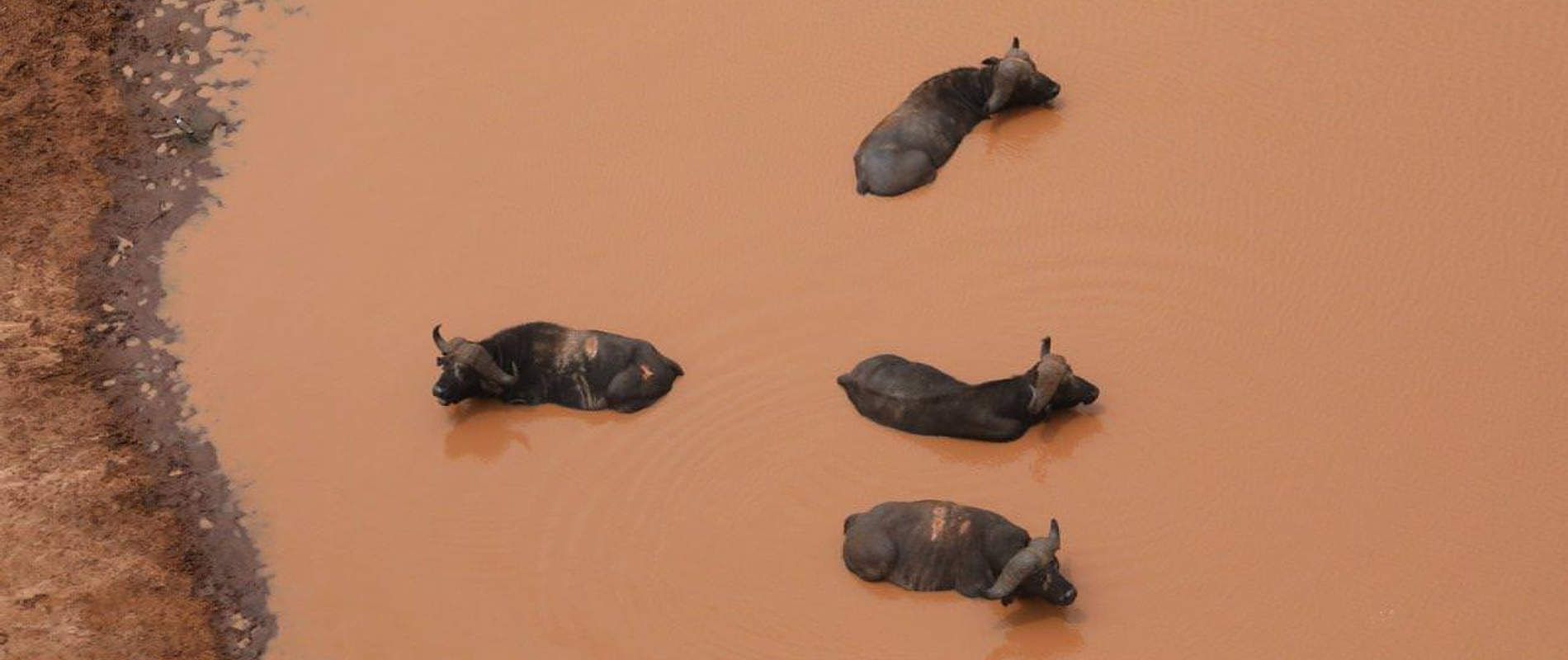Very little poaching activity was observed by the Aerial Unit in November with only one recent shooting blind discovered on a helicopter patrol as well as one old poacher’s hideout.
Charcoal burning was only seen on a few instances in KARI, Kiboko and ground teams were sent for follow-up. Human-Wildlife Conflict persisted in November, with a total of 4 cases responded to by the helicopter. Only one major livestock incursion was noted in Tsavo East during the month yet in Tsavo West, there was a slightly different picture. After extensive surveys by both fixed-wing and helicopter, it was estimated that there were more than 20,000 head of livestock in Tsavo West. This turned out to be a massive operation involving three aircraft. The operation resulted in a massive reduction in cattle, especially in the northern sector, where a follow up patrol discovered only 1 herd of 100 cattle and no bomas. A total of 16 arrests were made by KWS rangers on the ground whilst several thousand cattle were pushed out of the Park by fixed-wing, and 11 bomas were destroyed by KWS rangers.
Early in the month, we were called to assist in the search for a 6-year-old Maasai boy who had disappeared while out collecting firewood on a ranch neighbouring his home, after 3 days of ground and aerial searches the boy was luckily found unscathed.
Only one elephant carcass was found during November of an adult elephant. The carcass was a few months old with its tusks intact, whilst the SWT helicopter assisted with a total of 5 veterinary treatments.
A rather large development in November was an operation, conducted by the Kenya Government to evict all illegal settlements in South Kitui National Reserve. A permanent KWS presence has been setup in South Kitui now, and regular patrols are being conducted. South Kitui is a large area, covering approximately 186,000 hectares, and will provide an incredible buffer and wildlife dispersal area for the Northern area of Tsavo East National Park.
Another major highlight for November was the sighting of a week-old rhino calf born in Tsavo East. She had been seen by rangers a few days earlier; however, this was the first time that her sex and the identity of the mother could be confirmed. We are thrilled that the black rhino population of Tsavo East now stands at 17 individuals, up from a low of nine not too long ago.

